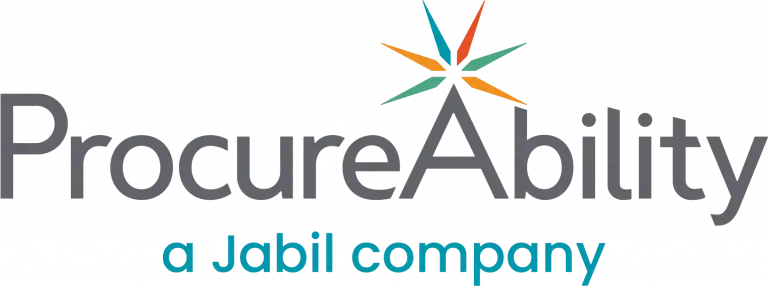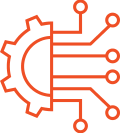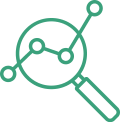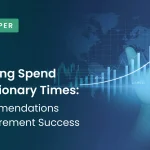A carefully thought-out data strategy drives success for any organization today. Moreover, a strong data strategy shapes culture and guides future actions. It does this by giving the organization a clear understanding of what data exists and how the company intends to use it. However, in a world of constantly evolving technologies for data ingestion, analysis, and reporting, organizations increasingly struggle. They find it difficult to tailor their data strategies to meet specific needs and goals.
An ideal data strategy supports repeatable risk mitigation, forecasts gains, and enables smart portfolio management. Therefore, when creating a data plan, consider why you collect information and how you use it. Also, think about whether you act on insights, and what problems it solves.
Sometimes, you will need complex data techniques to tackle the challenges your team faces. Procurement professionals often explore emerging tools like machine learning (ML) and artificial intelligence (AI). These tools offer powerful and efficient solutions. Yet, most procurement organizations lack enough data or the right type of raw data. This makes it hard to apply ML and AI effectively to spending or sourcing projects. As a result, achieving meaningful automation or efficiency gains on your own remains difficult. Nevertheless, you can take practical steps to obtain and apply the right data to fully leverage these exciting technologies.
THREE KEY STEPS FOR
TO OPTIMIZE YOUR DATA STRATEGY
STEP 1: Combine Available Data to Create an Internal Baseline
Every organization’s data strategy should include collecting intracompany data on specific goods and services. Insights from internal stakeholders—such as why a product or service was chosen, whether for speed, competitive intelligence, or potential innovation—can help guide future purchasing decisions.
By collecting intracompany information from the outset and recording data sources, an organization can more easily refresh its dataset and define its baseline or current steady-state position. This step may include collecting supplier audit data, gathering personal testimony from current innovation partners, and reviewing product or service issues along with any available transactional data.
STEP 2: Integrate Contextual Data
Procurement organizations often focus on transactional information without gathering contextual data. If they ignore external sources—such as third-party data (import/export databases, exchange rate updates, etc.), governmental publications (Energy Information Administration, Bureau of Labor Statistics, Census data), and other relevant data points—they miss crucial insights. Best-in-class procurement data strategies continuously incorporate a variety of relevant external data sources.
As an example, for an organization that manages large volumes of corrugate packaging, they would be remiss not to utilize reports around pulp mills, follow the fluctuations in imports/exports of pulp and paper products, and may even go as far as following fuel and transportation to fully develop their supply chain view.
STEP 3: Utilize Relevant Data Techniques to Review and Analyze your Data
By now, you likely have your datasets and third-party reports. You may have uncovered a few “pain points” and are ready to move into data analytics and forecasting. For companies with disparate data types, multiple sources, or very large datasets, typical data analysis software may not be robust enough to perform this analysis quickly and efficiently. Traditionally, procurement analytics focused on understanding past spend and supplier performance. However, the focus is increasingly shifting toward AI-driven, prescriptive decision-making. This shift marks an evolution from “descriptive” analytics to “prescriptive” analytics.
While your organization may not have ML and AI expertise on-hand, we recommend that organizations assess the analytics-as-a-service products market for solutions. For example, ProcureAbility’s analytics-as-a-service product, PureSpend, helps organizations to get to the next stage. With tailored dashboards, secured data warehousing, and a focus on client autonomy and data accessibility, our services support any number of client-requested data needs that can be refreshed at the click of a button.
If you are interested in learning more about optimizing your procurement data strategy, please reach out to our Analytics and Intelligence experts.
